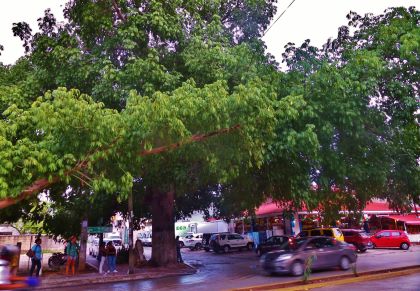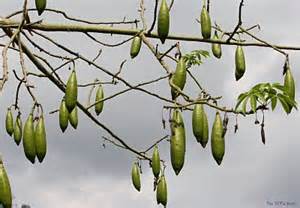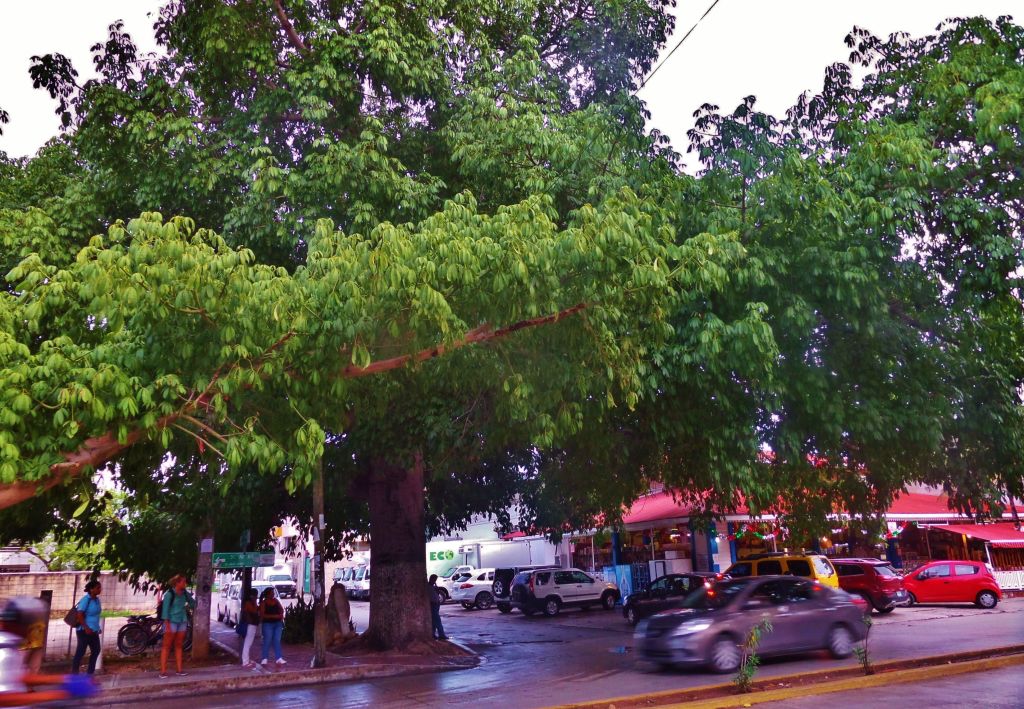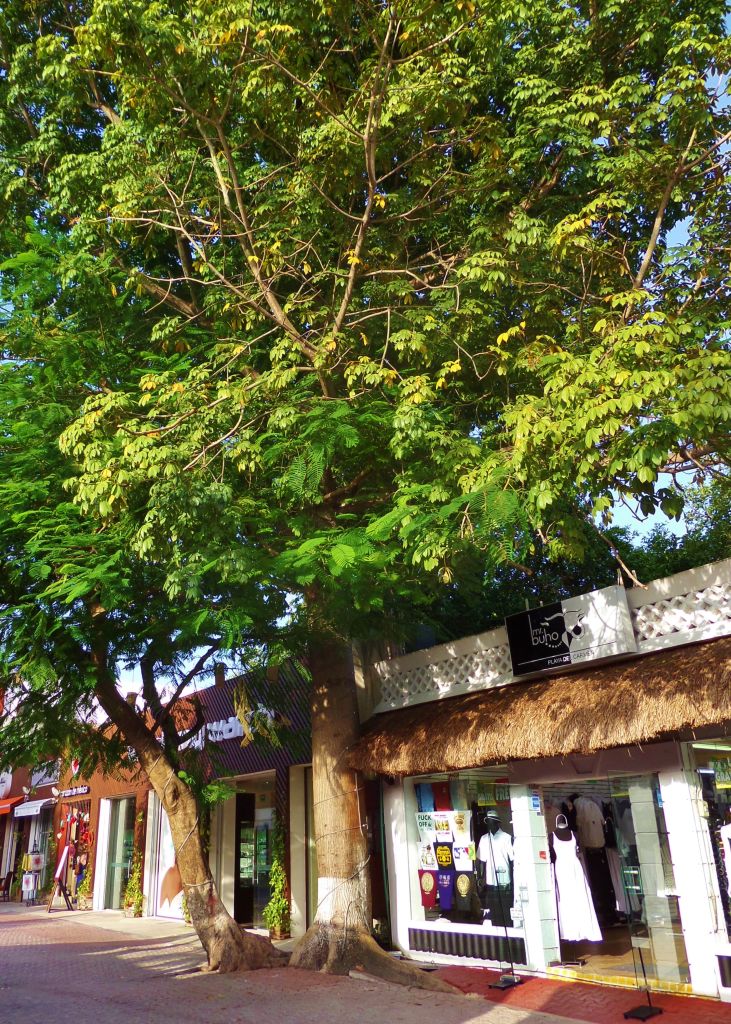
Ceiba Trees
The Ceiba tree is a respected tree wherever it grows in the world. Not only is it respected by ancient peoples including the Mayans but also by observers of these massive trees and the unique products made from the Ceiba.
Ceiba trees grow in Mexico and Central America, in the tropical areas of South America, a few places in Africa and southeast Asia. These trees can grow from 45ft to 100 ft tall and have a massive trunk with strong outright limbs. The tree canopy is umbrella shaped and resistant to hurricanes.
The Ceiba tree is also know as the Kapok tree and Silk floss tree. In Mayan it is known as the Yaxche. (Now you know how the Mayan restaurant in Playa Del Carmen got it’s name)
The Ceiba is the national tree of Guatemala, our nextdoor neighbor.
Mayans and the Ceiba tree
Mayans hold the Ceiba tree to be sacred. It is believed that the souls of the dead ascend to the top of the trees to go to heaven. It was also a connection between all three worlds, the underworld, earth and heaven. Today you can find Ceiba trees planted near cemeteries and at the center of religious ceremonies.
There is a resemblance between the Mayan’s beliefs and the Bible which has the story of the Tree of life in the Garden of Eden. That tree had a special connection to God as well.
These trees also can mean life because they grow near good water sources. If people looking for a good place to live with water and they saw a Ceiba tree they would know that there was water available in that area.
A tree with spikes
 The Ceiba is an amazing tree when it is young. It looks very formidable with large thorns on its trunk. Why would a tree have such nasty looking spikes on it? When the tree is young it has not fully developed its roots system and having spikes prevents animals from damaging the semi-delicate developing trees. Eventually the thorns fall off the tree. When these trees mature, they have a massive root system including what looks like buttresses that brace the tree. These buttresses appear above ground.
The Ceiba is an amazing tree when it is young. It looks very formidable with large thorns on its trunk. Why would a tree have such nasty looking spikes on it? When the tree is young it has not fully developed its roots system and having spikes prevents animals from damaging the semi-delicate developing trees. Eventually the thorns fall off the tree. When these trees mature, they have a massive root system including what looks like buttresses that brace the tree. These buttresses appear above ground.
Seed pods of the Ceiba tree
It takes a Ceiba tree at least seven years to mature to produce its first seed pods. Then usually every other year you will see pods grown on the tree that are about the size of an avocado. These pods were called ‘pochote” by the Mayan people. They gradually grow and crack open exposing the puffy white fibers. It looks like cotton and actually has tiny black seeds in it. The white fuzz helps to carry the seeds farther away to new areas to grow.

The white fibers are prized because they are do not cause allergies. The white puffy material is used as a natural fiber to fill mattresses in southeast Asia. In the 1940’s it was used to fill lifejackets because its buoyancy properties and water-resistant abilities. In the 1950’s it was used to fill automobile seats. In pre-Hispanic times this fiber was important for clothes making.
So next time you see these pods just think about the usefulness of the materials inside.
Notable Ceiba trees in Playa Del Carmen
While here in Playa Del Carmen you can see some of these massive trees around town. The best one and biggest tree in Playa Del Carmen is located right on 30th Avenue near the intersection of Constituyentes Avenue. It is right next to DAC market. This massive tree branches out to cover almost one block and is admired and appreciated by people every day as they wait for busses under its protecting branches.

On 5th Avenue you can see a medium age Ceiba tree just near where 14th Street intersects, as seen in the photo below.
There are other trees like the massive one on 32nd Street between 5th Avenue and 10th Avenue or around the Playacar section. If you visit Xcaret park you will see a very important Ceiba in the middle of the Mayan Cemetery.
These very special trees are just one more interesting thing found in Playa Del Carmen and in the history of the Mayan people.
More reading
If you like to know more about nature and trees in the area, you might like to read our article about the ziricote tree.


